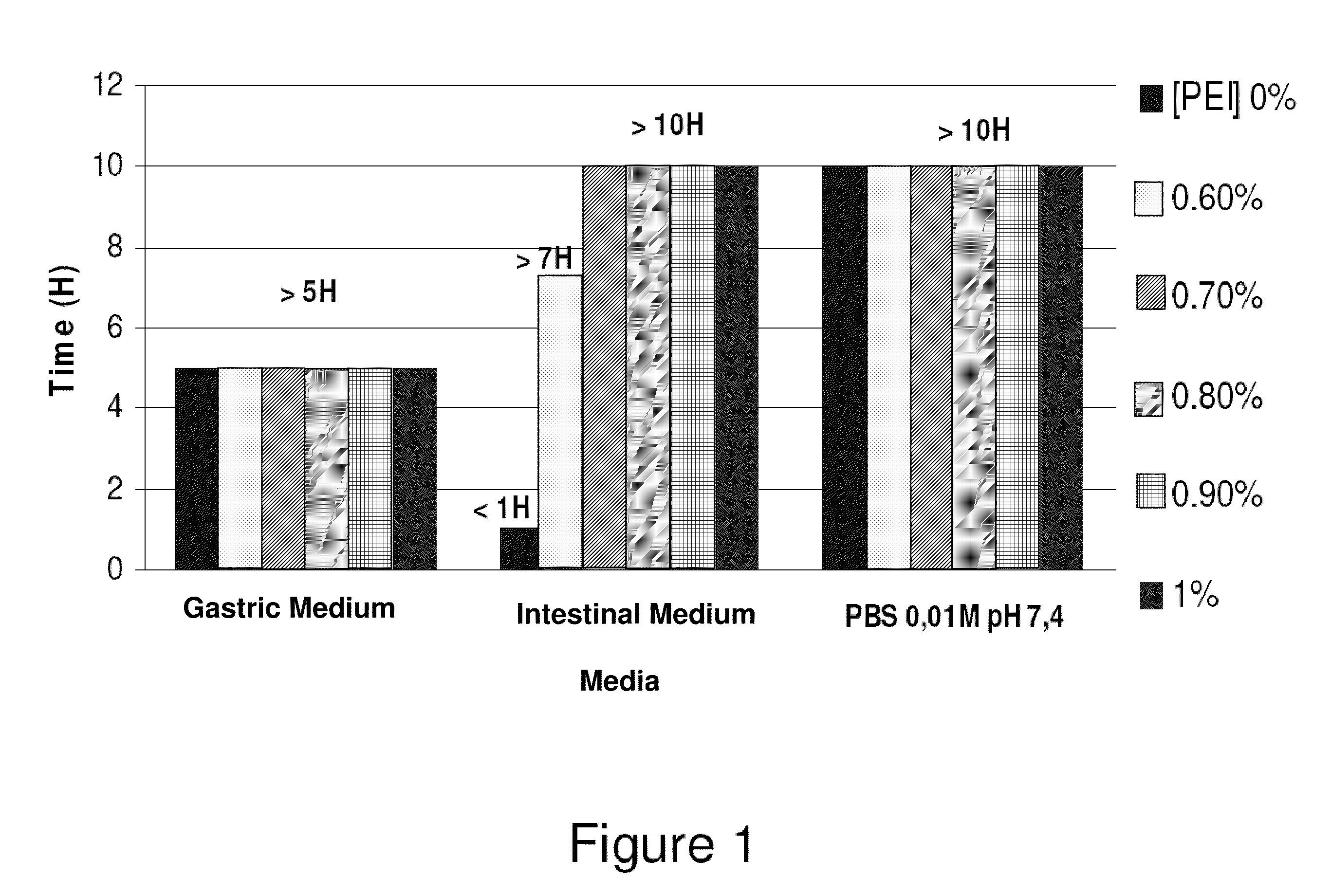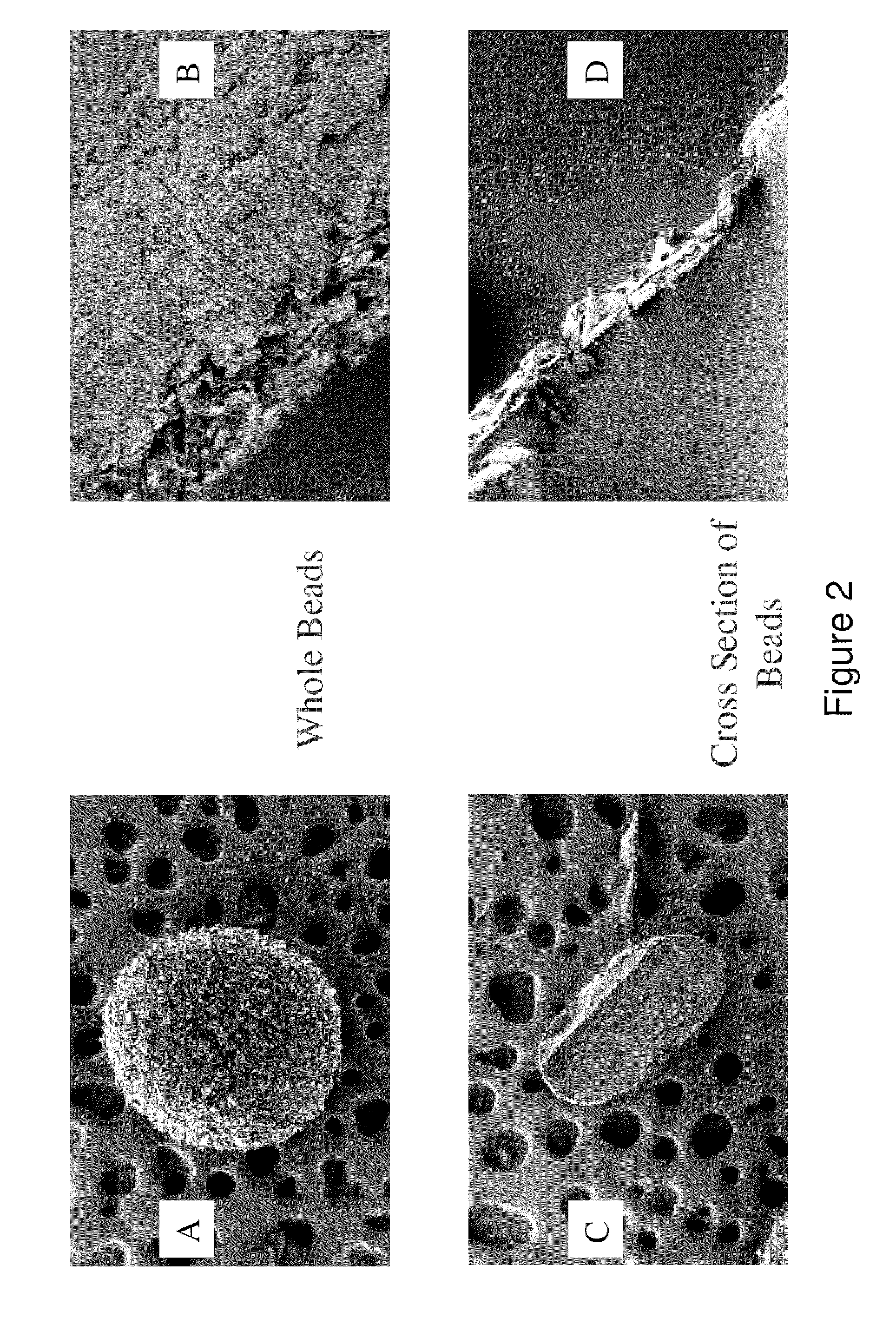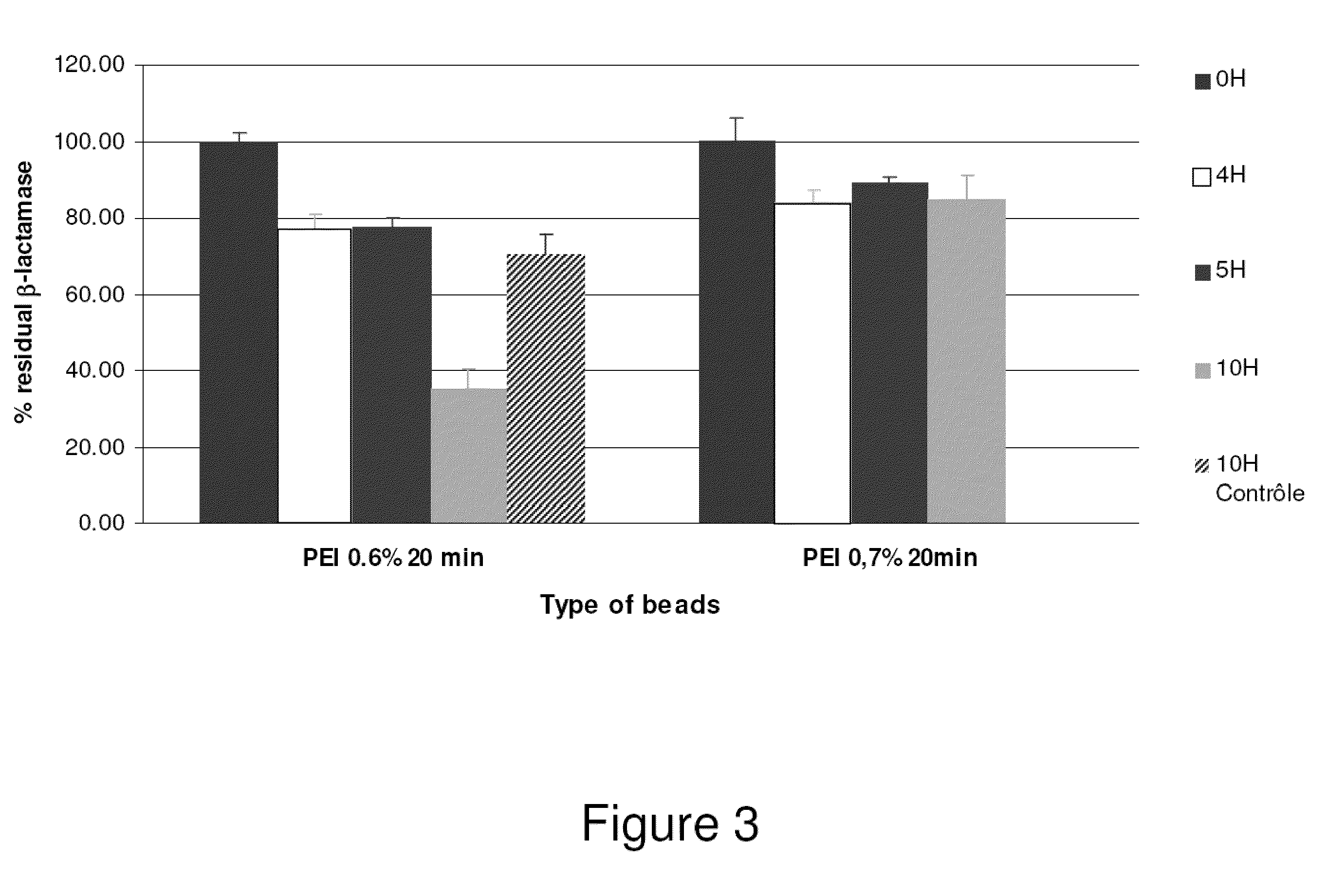Galenic formulation for colon-targeted delivery of active ingredients
a technology of active ingredients and galenic formulations, which is applied in the direction of prosthesis, peptide/protein ingredients, drug compositions, etc., to achieve the effect of greater stability in gastric jui
- Summary
- Abstract
- Description
- Claims
- Application Information
AI Technical Summary
Benefits of technology
Problems solved by technology
Method used
Image
Examples
example 2
Stability of Beads
1. Operational Method.
[0085]The beads were prepared according to Example 1 with or without the reticulation stage; the duration of reticulation in PEI was 20 minutes in solutions of concentrations ranging from 0.6 to 1%.
[0086]The beads were placed either in phosphate buffer (PBS 0.01M, pH 7.4), or in media simulating digestive juices (gastric and intestinal USP XXIV) and the disaggregation time was observed.
2. Results.
[0087]These are given in FIG. 1.
[0088]The beads reticulated or not were stable in the PBS and in the gastric medium. However, the non-reticulated beads were unstable in the intestinal medium, whereas the beads according to the invention were stable for over 7 hours.
example 3
Morphological Characteristics of Beads
[0089]They are illustrated in FIGS. 2A to 2D.
[0090]The cuts show that the center of the beads was full and dense. The surface shell corresponds to the PEI. The interior and exterior have different structures.
example 4
[0091]1. Operational Method.
[0092]Beads reticulated with two different concentrations of PEI (0.6 and 0.7%) were prepared according to Example 1 from amidated pectin and containing 5 UI / bead. They were left for 5 hours in intestinal medium USP XXIV at pH 6.8, then introduced to synthetic colonic medium at pH 6 including pectinolytic enzymes (Pectinex Ultra SPL).
[0093]The residual β-lactamase activity in the beads was measured over time by spectrophotometry in the presence of nitrocephine.
2. Results.
[0094]They are illustrated in FIG. 3.
[0095]After 5 hours of incubation beads in intestinal medium (T5H) less 25% of β-lactamase activity which they contain was released. The release becomes important in colonic medium under the action of pectinolytic enzymes (Tien), for the reticulated beads with 0.6% PEI, while the sample without pectinolytic enzymes (T10H control) had no significant modifications of β-lactamase activity. On the contrary, the beads reticulated wi...
PUM
| Property | Measurement | Unit |
|---|---|---|
| molecular weight | aaaaa | aaaaa |
| pH | aaaaa | aaaaa |
| diameter | aaaaa | aaaaa |
Abstract
Description
Claims
Application Information
 Login to View More
Login to View More - R&D
- Intellectual Property
- Life Sciences
- Materials
- Tech Scout
- Unparalleled Data Quality
- Higher Quality Content
- 60% Fewer Hallucinations
Browse by: Latest US Patents, China's latest patents, Technical Efficacy Thesaurus, Application Domain, Technology Topic, Popular Technical Reports.
© 2025 PatSnap. All rights reserved.Legal|Privacy policy|Modern Slavery Act Transparency Statement|Sitemap|About US| Contact US: help@patsnap.com



